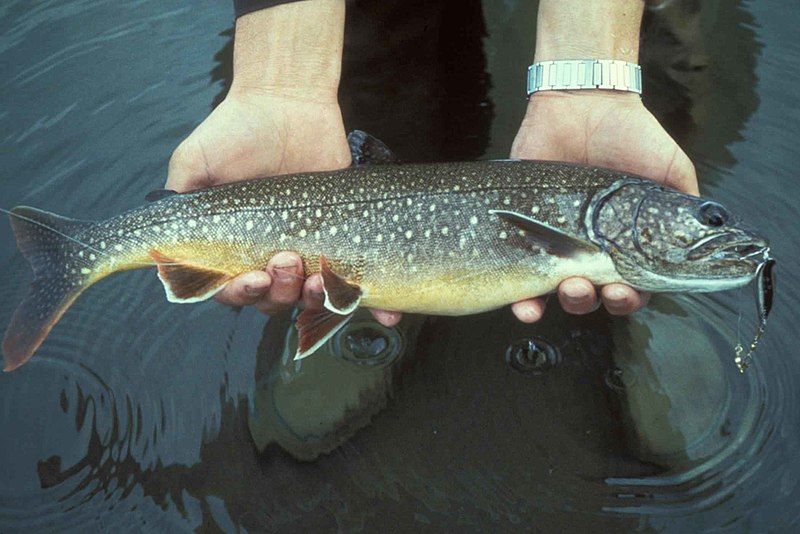
Read the article with FishingTheSpot: the lake trout
Keep an eye on this subject!
Thousands of species spotlights and techniques but also all the local information about your city!



Meet other anglers near you and share your fishing fishing trips, afoot or on a boat, at sea or in freshwater
See the fishing tripsThe Lake trout

all year round
38 cm
Did you fish
this species this month?
The Lake trout belongs to the Salmonidae family. The average size is 68 cm for 3 kg. It has a lifespan of 12 years. It spawns in fall. It can be fished all year round.
Lake trout have a deeply forked caudal fin and a slate-grey to greenish grey body with a lighter underside. Cream to yellow spots are usually present on the head, body, dorsal and caudal fins. Lower fins are orange-red with a narrow white edge. Younger fish will have between seven and twelve marks of broken parr along their sides. The species supports nine to twelve gills and, unlike its cousin the brook trout (Salvelinus fontinalis), lake trout do not have a black band on the front edge of their anal and pelvic fins. Breeding males develop a dark lateral band on their sides.
The Lake trout lifestyle
As juveniles, lake trout consumes mainly zooplankton and small invertebrates. When they grow up, their feeding habits change and fish become opportunistic piscivores. Adults species of lake trout are generally piscivorous and eat a wide variety of pelagic prey species. In the Great Lakes region, alewives, smelts, sculpins and minnows are a major part of the lake trout diet.
Lake trout look for pebble, rubble or gravel substrates in which to reproduce. Males ventilate the bottom with a finer silt so that the female's fertilized eggs can be deposited in the substrate. When a female enters a spawning area, several males engage in an amplexus (hugging) with the female; in this way, eggs and sperm are released onto the substrate. Spawning usually occurs in the fall or early winter and generally at night, and because of their colder habitats, fertilized eggs require a long hatching period. Eggs overwinter for four to six months before hatching. Developing trout remain in the cracks of the spawning substrate until their yolk sac is completely absorbed. These fingerlings then move to deeper waters in search of food, usually in the form of zooplankton.
The Lake trout habitat
Lake trout is a cold water species that requires relatively high concentrations of dissolved oxygen to survive. Lake trout are the only large native sport fish adapted to the deep and cold waters of oligotrophic (poorly nutritious) lakes, such as those often found in northern Canada and the Great Lakes region.
It comes from northern Canada, Alaska, the Great Lakes and parts of New England. It has been introduced in New Zealand, South America and Sweden.
The Lake trout angling
It is fished with a spinner, fly or spoon.


